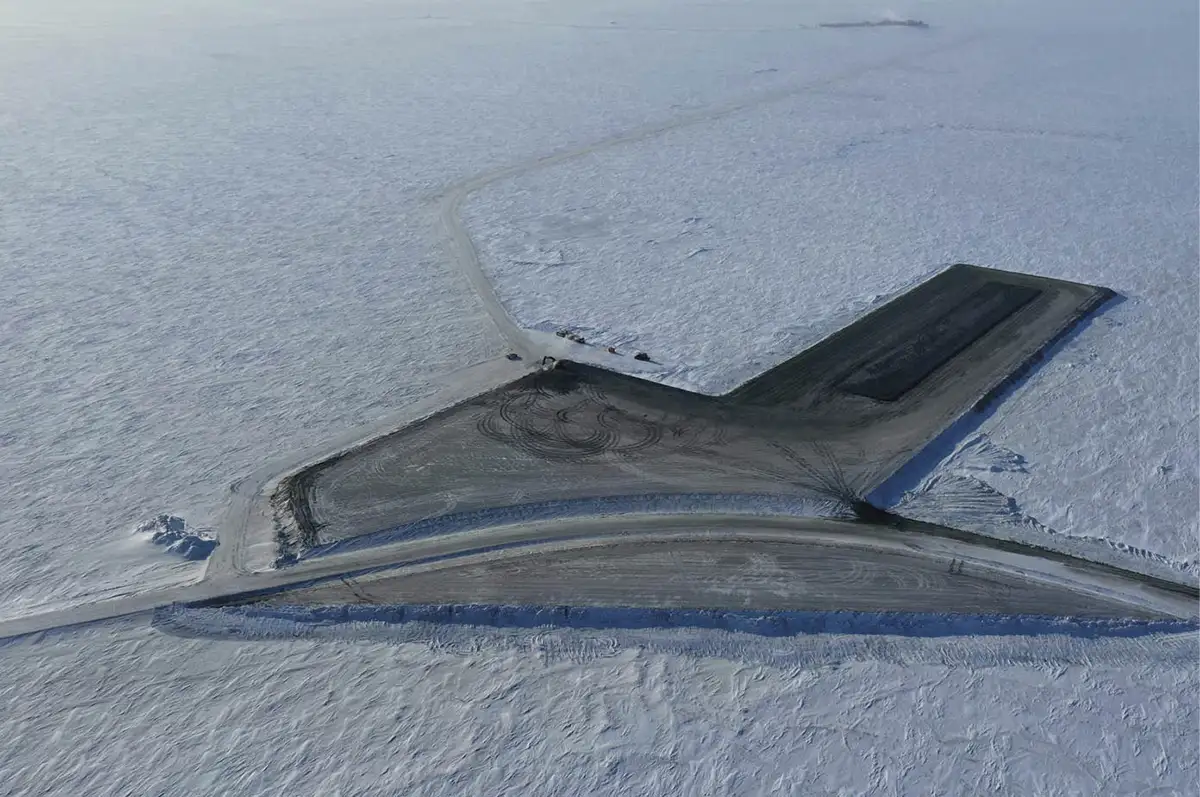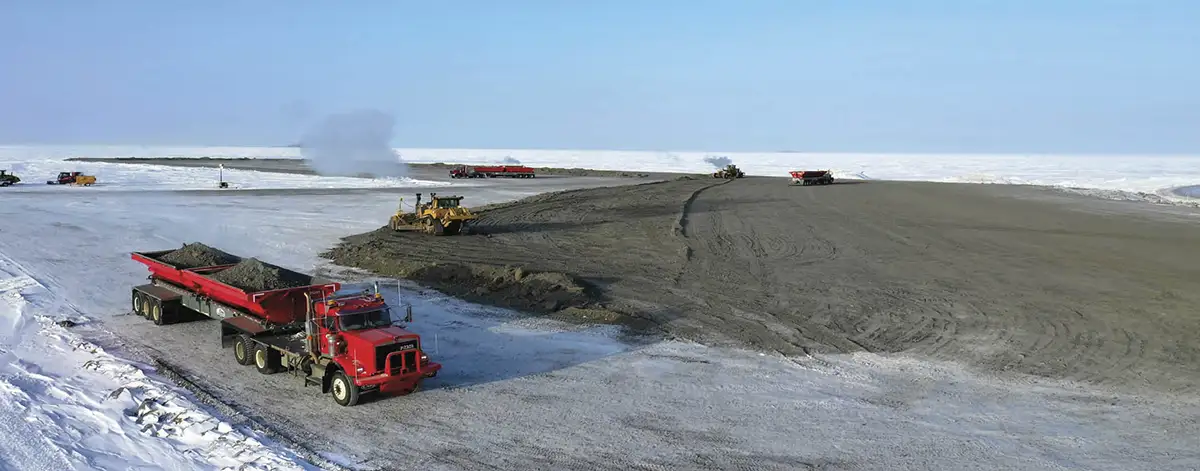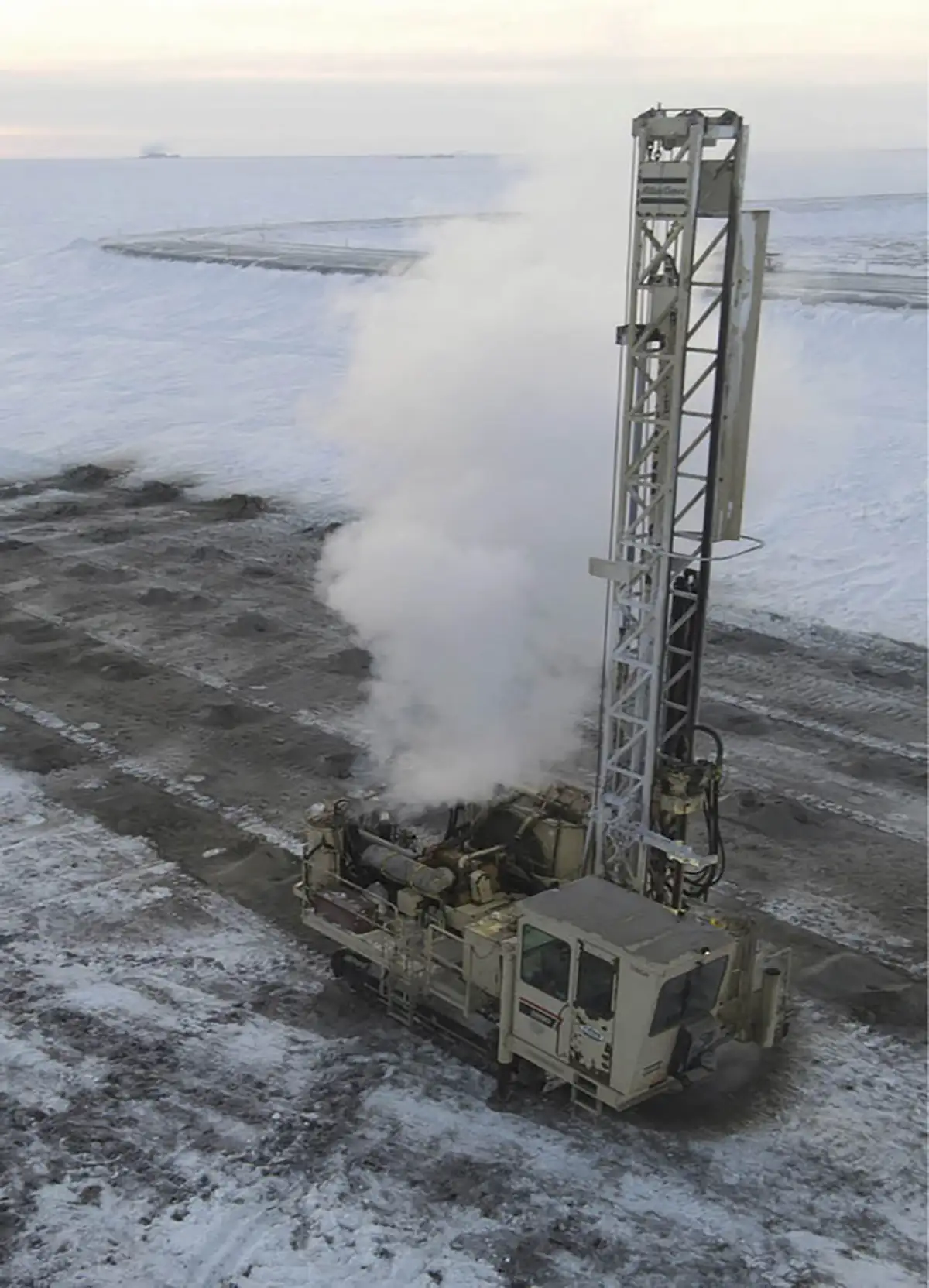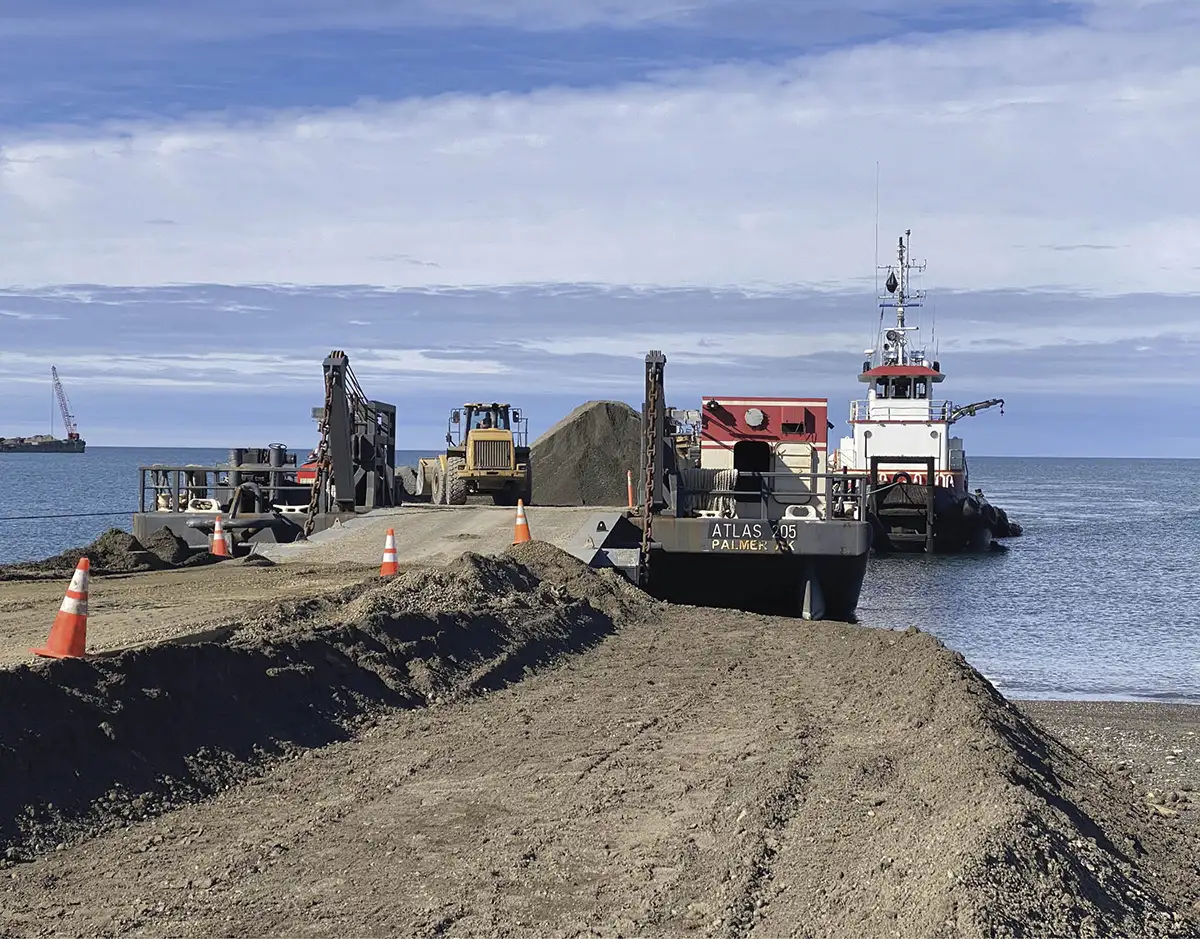ravel pads are an essential base for oil and gas operations on the North Slope tundra, which is delicate and subject to challenging freeze/thaw cycles of the permafrost below. These artificial gravel islands establish a stable foundation for industry activity while protecting the tundra, allowing Alaska operators to both access critical resources and protect the natural environment.
Installing the pads for exploration and drilling on the North Slope presents several logistical considerations: where to acquire and how to transport gravel to a potential site can make the difference between a project that’s passed over and one that’s identified as economically feasible.

Cruz Construction

This pad expansion would allow Hilcorp Alaska to drill twenty-five new wells. If constructed, once the pad is in the place the first round of twelve wells is slated for drilling in September 2024, with the second round of thirteen drilled in 2025.
While all gravel pads provide a stable base, not all those industrial islands are on solid ground. Some are literally at sea.
Cruz Construction

After Endicott proved that offshore development in the Arctic was possible, BP followed up a decade later with Northstar. Royal Dutch Shell discovered the oil pool in 1984, but the site was 5 miles offshore—too far for a causeway, like at Endicott. By 1999, BP pushed the project forward by designing a subsea pipeline to bring Northstar’s oil ashore. The production well was built on top of 700,000 cubic yards of gravel poured through holes cut in the frozen Beaufort Sea. To protect the squarish shoal from shifting sea ice, the edges are reinforced with concrete mats. Northstar has been in production since the fall of 2001, also operated by Hilcorp Alaska.
The techniques that made offshore gravel pads possible were perfected by the crews who built them on the tundra.
It has completed more than $1 billion worth of heavy civil, oil and gas, mining, and marine projects in Alaska and the Lower 48.
“The majority of projects mine gravel in the wintertime utilizing drill and shoot as the primary mechanism of the mining process,” says Miller. “We build ice roads from the material sites to the construction sites.”
In 2017, Cruz Construction completed the Moose Pad project, an expansion of the Milne Pit gravel mine in the Kuparuk oil field, to support the construction of a drilling and production gravel pad. The project cost $6.3 million.
Cruz Construction

“It is rare that we have to fly equipment in,” says Cruz Construction Senior Executive Vice President of Operations Jeff Miller. “The primary mode for mobilization for most oil and gas support projects is an ATV mob. The secondary is barging, but most barging mobilizations require ATV support, too.”
All-terrain vehicles are just the beginning of the equipment needed for such a project. “The equipment list is large and diverse,” Miller says, “but regardless of what you use, it needs to be Arctic rated.”
The 2017 Moose Pad project involved large-scale mine site development, including drilling and blasting overburden and gravel, winter hauling and placement of 315,000 cubic yards of gravel, construction of 3 miles of ice roads over tundra, cross drainage improvements, and summer post-thaw compaction and grading winter-placed gravel.
“Our biggest challenge is having the weather conditions to achieve the mining, hauling, and placing of the necessary volume of material,” Miller says. “The biggest challenges vary from year to year and project to project, but weather, terrain/environment, project financing, permitting, asset availability, et cetera are a few of the things that seem to always be present.”
Where the tundra hides a wealth of oil and gas resources, the workers who extract it can confidently stand on the sturdy surface of gravel pads.